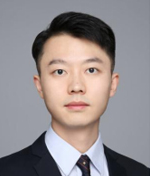Search
Session T1-2: Basics and Advances towards Wideband Continuous-time Delta-Sigma ADCs: Fundamentals, Recent Trends, and Perspectives
Title: Basics and Advances towards Wideband Continuous-time Delta-Sigma ADCs: Fundamentals, Recent Trends, and Perspectives
Location: Meeting Room 2, 3rd Floor, Crowne Plaza Kunming City Centre
Time: 10:45-12:15, Oct. 21, 2025, Tuesday
Speaker: Prof. Liang Qi, Shanghai Jiao Tong University, China
Abstract: High-efficiency oversampling analog-digital converters (ADCs) are still at the forefront of integrated circuits and very popular when it comes to research and development, both in industry and academia. While their implementation as noise-shaping SAR ADCs comes with the drawback of driving a large sampling capacitor merged with the capacitive DAC, the deltasigma modulator (DSM) based converter omits this. Their application range is huge, from wideband wireless communications to the data acquisition in IoT sensor nodes that demands an ultra-high resolution with very low power consumption. Due to the available high integrator gain within the signal bandwidth and the feedback established by the oversampling converters, they can achieve a relatively high signal-to-noise-and-distortion ratio (SNDR) and spuriousfree-dynamic-range (SFDR), within the signal band of interest. The ability to shape the unwanted noise and errors to the out-of-the-band gains a substantial design degree of freedom to the oversampling converters compared to their Nyquist counterparts.
When compared with the discrete-time (DT) implementation, the continuous-time (CT) DSM comes with important benefits of inherent anti-aliasing filtering, easier drivability, and powerefficient implementation due to the continuous-time signal processing. On the other hand, under a wide-bandwidth and low oversampling ratio (OSR), the single-loop topology poses significant limitations on the tough design trade-offs between the loop filters order and the stability. Multi - stage Noise-shaping (MASH) DSMs could achieve higher noise-shaping order while maintaining better stability when compared with their single-loop counterparts. Therefore, CT MASH DSMs are more promising to explore the maximum clock rate, thus extending the achievable signal bandwidth. To our best knowledge, note that the largest DSM bandwidth up to 500MHz was achieved by the 1-1-1 CT MASH topology. Nevertheless, the accuracy of the CT loop filter is not defined well, thus resulting in severe quantization noise leakage for MASH architectures. Besides, inter-stage interfacing is also problematic in CT MASHs.
This tutorial will provide a detailed review of the fundamentals, important decision-making factors, recent trends and advanced design techniques, and future perspectives on the stateof-the-art wideband CT delta-sigma converters.
Bio:
 Prof. Liang Qi (IEEE Senior Member) received Ph.D. degree from University of Macau, Macao, China, in 2019.
Prof. Liang Qi (IEEE Senior Member) received Ph.D. degree from University of Macau, Macao, China, in 2019.
He currently serves as an Associate Professor in Department of Micro/Nano Electronics, Shanghai Jiao Tong University (SJTU), Shanghai, China. Before he joined SJTU, he worked with Shanghai Hisilicon, where he conducted the project of multi-band (2G-5G) RX ADC. He was a Visiting Scholar at Ulm University, Germany, during the Ph.D. studies. His research interests include high-performance data converters and analog mixed-signal integrated circuits.
Prof. Qi has served as an Associate Editor for the IEEE TRANSACTIONS ON CIRCUITS AND SYSTEMS—II: EXPRESS BRIEFS. He also is/has been a TPC Member for IEEE APCCAS, ICSICT, ICTA, and ASICON. He received Macao Scientific and Technology Research and Development for Postgraduate Award in 2016 and Outstanding Young Scholar Paper Award in IEEE ASICON 2021, respectively.







 loading......
loading......